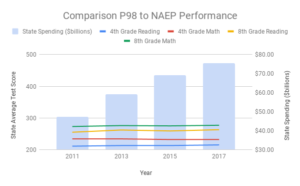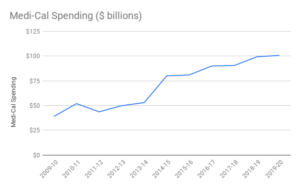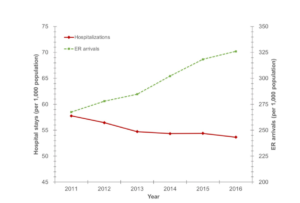Socialism has become a hot topic in the presidential election but that should not be a surprise. Governments in the US have long engaged in various shades of socialism. California is no exception.
Oxford defines socialism as “a political and economic theory of social organization which advocates that the means of production, distribution, and exchange should be owned or regulated by the community as a whole.” Examples at the federal level include socialized health insurance (Medicare and Medicaid), retirement security (Social Security), bank deposit insurance (FDIC), and mortgage financing (Fannie Mae and Freddie Mac).
K-12 education in California illustrates a deep shade of socialism. 93 percent of the state’s 6.7 million K-12 students attend schools funded by the government at a cost of $100 billion per year, 90 percent of whom attend government-run schools, the rest attend non-government-run schools (charters). Authority is centralized in the legislature and governor, who author a thick Education Code.
A lighter shade is portrayed by Medi-Cal, California’s version of Medicaid that provides health insurance for 33 percent of Californians at a cost of $100 billion per year. Unlike K-12, Medi-Cal (like Medicare) operates as a voucher system in which customers choose among available providers, including private providers. The legislature and governor have authority over Medi-Cal subject to federal rules and waivers.
Because K-12 and Medi-Cal are political in nature, they tend to respond more to political than customer pressure. Eg, parents would prefer great teachers in every classroom but because of political pressure from government employee unions the Education Code requires teacher lay-offs to be issued in reverse seniority regardless of performance. Medi-Cal customers would like better access to care but because of political pressure from doctor advocacy organizations state law inhibits the widespread utilization of nurse practitioners. Even legal decisions get politicized. Eg, while serving as Attorney General Kamala Harris joined government employee unions in seeking the reversal of a civil rights decision that had been won by poor and minority K-12 students.
A number of socialized education and health systems* around the world perform well and at reasonable cost but currently that’s not the case in California. Big increases in K-12 spending have not translated into increases in student performance or meaningful boosts in teacher salaries, leading to strikes in several districts.

The legislature and governor could improve student performance and teacher pay by, eg, (i) requiring school districts to standardize health benefit plans and to means-test retiree health insurance subsidies, if any, (ii) not requiring school districts to offer lifetime employment or to lay off employees in reverse seniority, and (iii) liberating school districts to terminate underperforming employees, suspend automatic pension benefit increases and reduce pension accruals for years not yet worked, and pay more to employees who perform better and/or take on tougher tasks.
The same is true with Medi-Cal. According to a recent NBER study, a doubling in spending improved hospital profits but not patient health and emergency room use increased.


The legislature and governor could improve MediCal’s access, costs, care and outcomes by, eg, (i) expanding the scopes of practice permitted nurse practitioners, physician assistants and nurse midwives, (ii) rewarding and punishing hospital performance, (iii) evaluating global hospital budgets policies, and (iv) using machine-learning and social services to intervene before costly medical treatment is required.
Private schools and private health insurance are permitted in California but only seven percent of K-12 students attend private schools and Californians eligible for Medi-Cal are by definition unlikely to have the resources for private insurance. Hence, customers must rely on the legislature and governor to gain excellence from those services. The same is true for taxpayers. Annual spending on K-12 and Medi-Cal is ~$95 billion greater than ten years ago but student performance, teacher salaries and public health have little to show for that increase.
At $200 billion per year and 19 million customers, K-12 and Medi-Cal are two of California’s largest enterprises. The legislature and governor are in charge. Only they can make those services work for customers and taxpayers.

